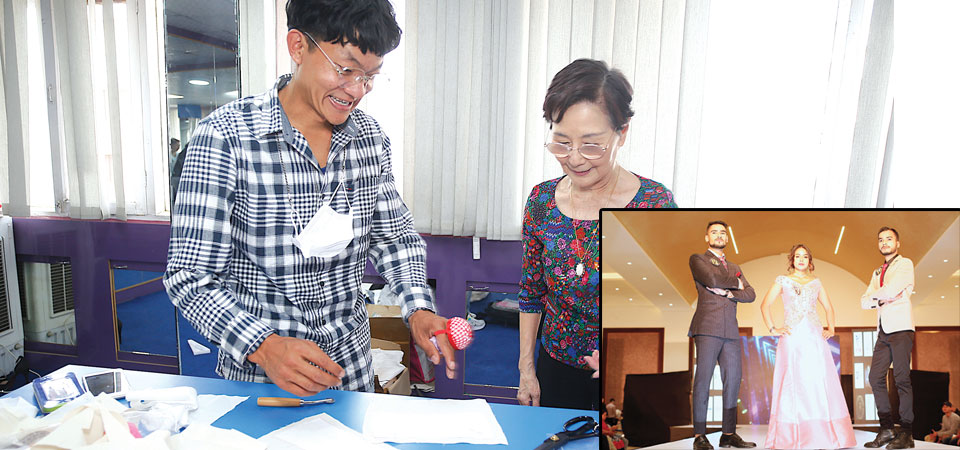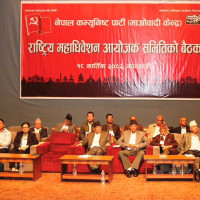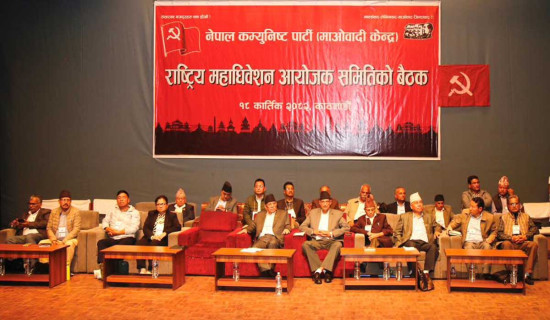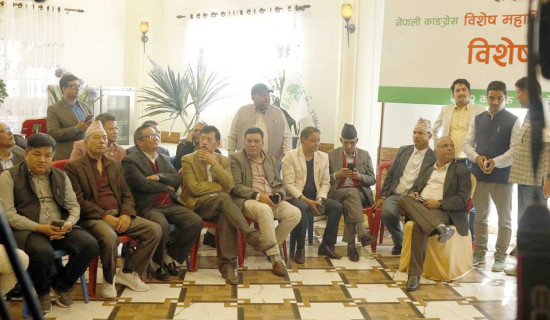- Wednesday, 5 November 2025
Bridging Cities With Fashion
Persijs Muiznieks ,
When I first met fashion designer Hisako Kasuya from Japan, she seemed to me a quiet, peaceful, not very talkative woman, but when I saw her working with students at the Dream Wear Fashion Institutes in Kathmandu, my opinion changed instantly. She was unstoppable in generously sharing her life's experiences. Even the language barrier failed to make her calmer.
It is quite uncomfortable for a middle-aged woman to reveal her age, but when I dared to do so, I realised that I had been wrong- she appeared twenty-five years younger than she really was.
Yes, this esteemed eighty-two-year-old Japanese woman demonstrates her knowledge of fashion in Tokyo, where she was born and educated. Despite her busy schedule, she kindly took the time to share her childhood memories, the time when her first dreams of becoming a fashion designer were born.
Favourite Occupations
Many girls in their childhood usually play with dolls. Hisako Kasuya was no exception, and her favourite occupation was making clothes for dolls that later, out of love, turned into a vocation and a professional job for a lifetime.
In the beginning, the necessary skills for working with scissors and a needle had not yet been found, but the diligence of the work prevailed, which allowed us to overcome all difficulties. Her craving was for professional advice on how to make a cut and handle tailor's supplies.
The parents observed the child's inclination to work and did not interfere with its progress. Patience and love led to the result, and when all the neighbours and domestic dolls were clothed in the world of her fantasy of costumes, more serious work had to be done. The first fashion victims were their parents, who were not ashamed to show their daughter's first success, which was soon noticed by neighbours. Hisako was enthusiastic when the first offers to embroider costumes came.
Up to professional skills was a long way to go. Nor should daily school life be disrupted. However, the difficulties did not stop the young person from choosing her future profession.
Hisako was well aware of this and did not dare to charge for the first orders. The start-up period was quite difficult, as money had to be found to survive.
Starting a family took extra care, which took away a lot of free time. Only then did she understand the benefits of her chosen profession. Free working time style, independence, freedom of imagination.., what could have been better for the lady. She was overwhelmed with happiness and satisfaction. It's a great profession that gives a woman a chance to get rid of other addictions, she says.
Hisako's life was full of surprises alternating with disappointments. Ten years ago, she was struck by a severe heart attack that gave her little hope of survival. Overwhelmed with despair, she turned to God, begging to live for at least five years, so that she could pass on her knowledge to the next generation. And a miracle happened. She seems to have been heard. The hardship of the gloomy life set the goal of meeting people from poor families and training them as tailors. The Sati Foundation was taken to help, discovering Hisako's roads to Nepal. The first studies and basic training as a tailor will soon be organised here.
Although the two countries are on the same continent, there are significant cultural differences. Japan is more monolithic in social terms and cannot be proud of its ethnic / caste group composition compared to Nepal. A rhetorical question aroused curiosity in this regard. What could Nepalese students inherit in the above context? You are right. Japan is not so fragmented, neither ethnically nor linguistically, but the peculiar colour scheme is quite rich, which we are proud of.
New Elements
The 21st century brings new elements to everyday life and fashion sometimes distorts fundamental national values. That is why I am here in Nepal to instil respect for the basic values of fashion. In Japan, this issue is being honoured. However, much is being westernised and our traditional Kimono is losing its appeal.
I want to bring up a master's student here in Nepal. As I said, this is a world of fantasy that has no boundaries and must be allowed to express itself, only then can you become a master of your profession. Tailor's tools alone are not enough. Let's start with the basics. And namely, how to handle a tape measure, scissors and a sewing machine. The first sketch is created on paper, then body measurements are made. Based on the layout, a cut is created. Using our training standards, each student has the opportunity to embroider his clothing. This is a high-quality training technique that we use in Japan. In the beginning, it is difficult and sometimes incomprehensible for your students.
I noticed that the studio here is based on a fair sex student among whom there is one guy, 28 years old, named Binaya Rai. Are there the same trends in Japan? It's basically a woman's job, Hisako adds.
Here, the guy is very diligent, works with love and I see talent in him. I am interested in organising young people from villages, those who want to study but lack financial assistance. According to my observations, such a selection shows more dedication to training. I usually teach once a year, but due to the great interest, I will be forced to come more often. Age also does not allow us to be as active as in youth. I was fascinated by her concern for the students, seeing how she generously gifted them. The heavy suitcase, brought from Tokyo, was about 18kg. in weight and each student was gifted with tailor's supplies to get started.
I felt an atmosphere of friendship and love in the studio. Combining the pleasant and the useful things, the management of the Holy Himalaya Hotel invited me and the Japanese design delegation to attend the Grand Finale Fashion Show, which took place on April 2, 2022. in Kalimati, giving broader insight into this field of business. We each had our rating scale.
It was the new generation. Athletic statures, hairstyles, and tall guys showed that they were going seriously, as they say, with a bit of a western flavour. The boys' black costumes were quite depressing and sometimes boring, which did not differ by each subsequent act unless one of the embellishments changed the location of the suit. However, under the influence of music and dazzling light, the shadows of boredom were dispelled.
Where did the Nepalese take the long-legged girls who captivated the audience in their transparent evening dresses? In general, we expected to see avant-garde, modernism, and stylism. Nothing was surprising. All these opera is visible in everyday life, so the four-hour show made it quite boring.
The Japanese guests also hoped for more. However, this did not deny the hope that the Japan-Nepal fashion bridge will further serve in the field of closer cultural cooperation. Hisako Kasuya promised to visit Nepal later this year, surprising students with something new in the fashion field, adding that she wants to host a Japan-Nepal fashion show in Kathmandu. May her dream come true!
(The author is a photojournalist based in Nepal)















